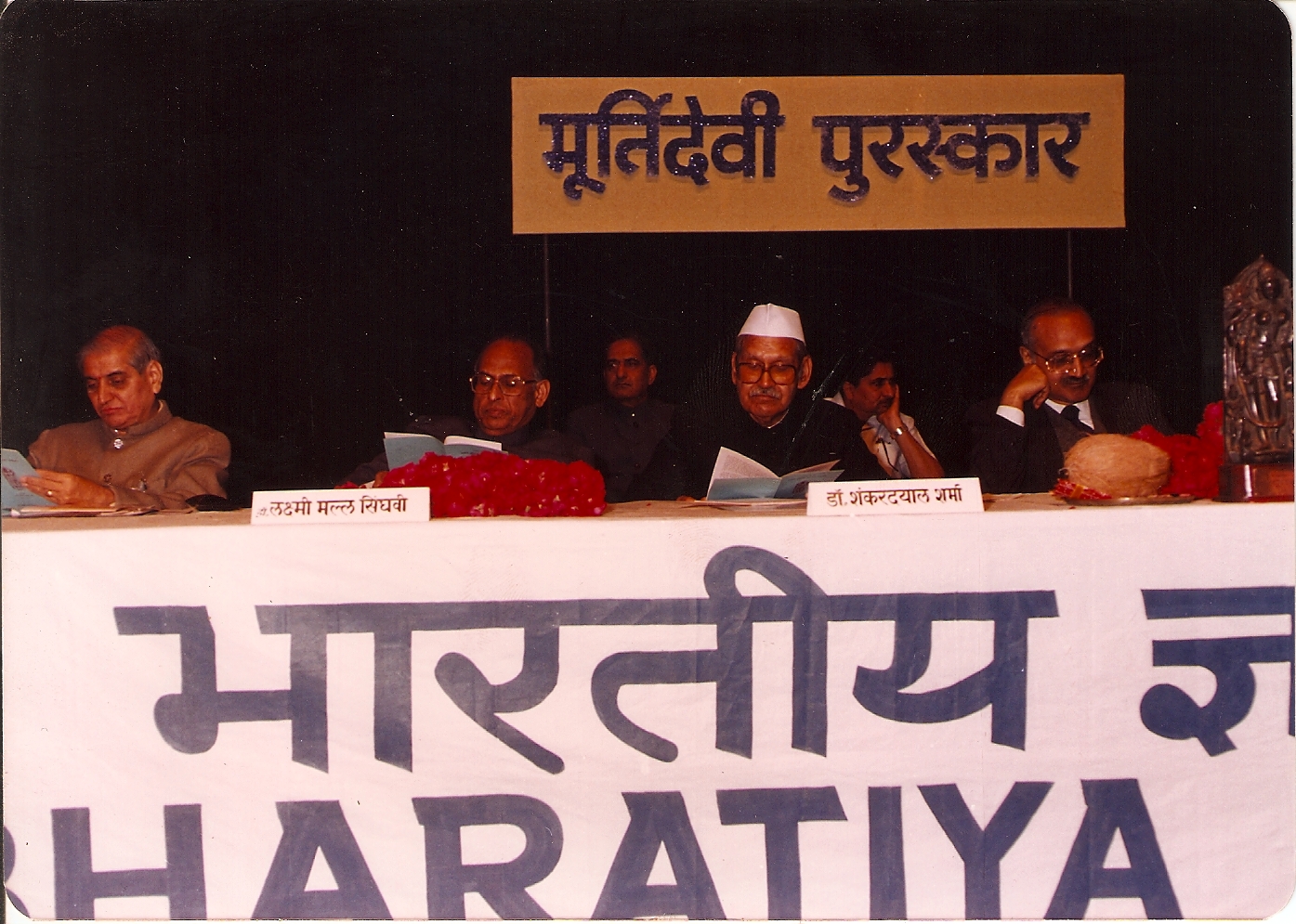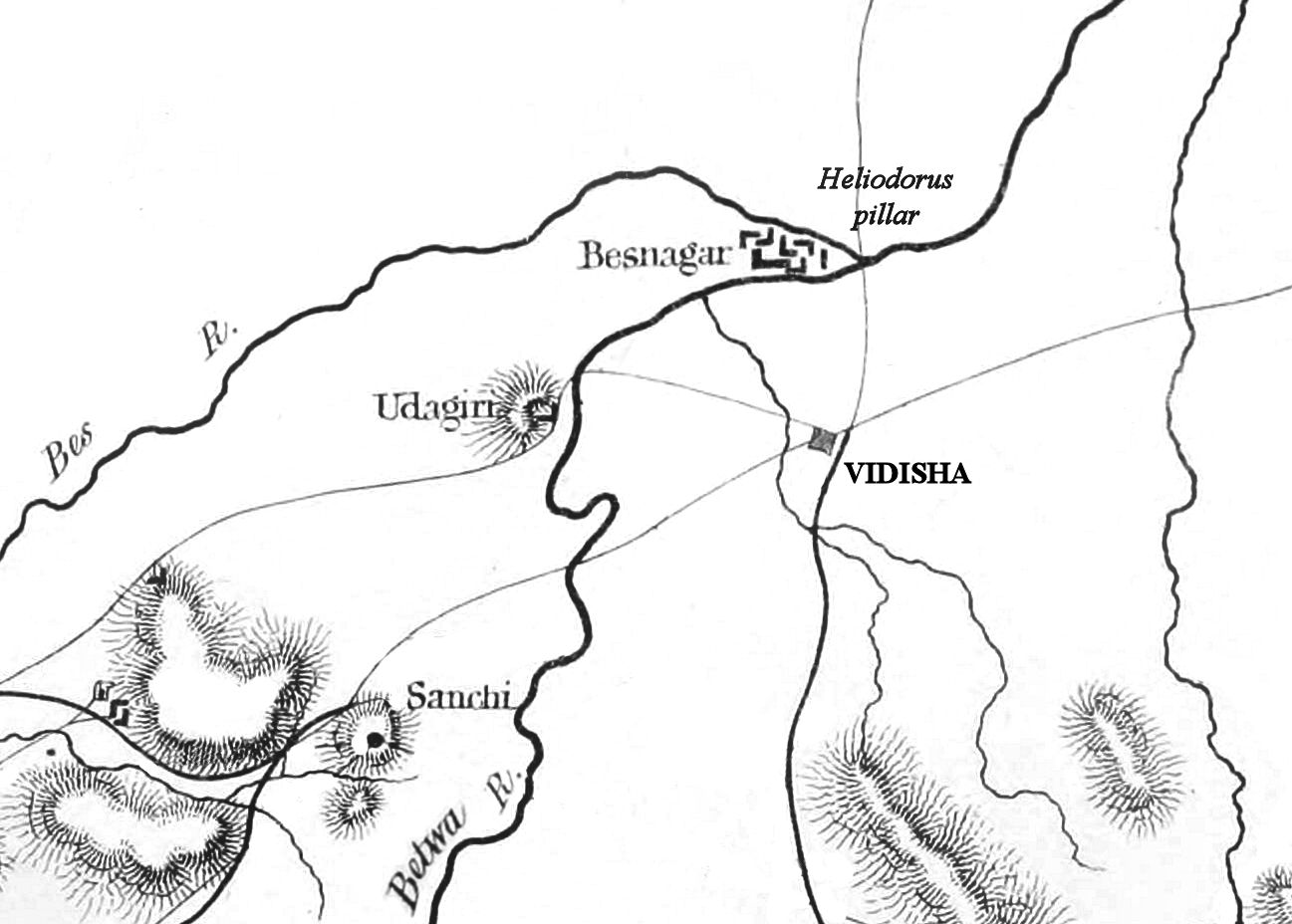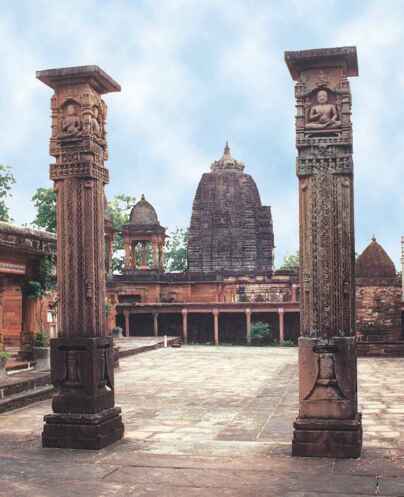|
Shatakhandagama
The (Sanskrit: "Scripture in Six Parts") is the foremost and oldest Digambara Jain sacred text. According to Digambara tradition, the original canonical scriptures of the Jains were totally lost within a few centuries of ''Nirvana'' of Mahavira. Therefore the ''Ṣaṭkhaṅḍāgama'' is the most revered Digambara text that has been given the status of ''āgama''. The importance of the ''Ṣaṭkhaṅḍāgama'' to the Digambaras can be judged by the fact that, the day its ''Dhavalā'' commentary was completed, it is commemorated on the ''Śrūta Pañcami'', a day when all the Jain scriptures are venerated. The ''Ṣaṭkhaṅḍāgama'', the first ''āgama'', is also called the "Prathama Śrūta-Skandha", while the ''Pancha Paramāgama'' by Kundakunda are referred to as the second ''āgama'' or Dvitiya Śrūta-Skandha. Origins It is said to have been based on oral teaching of the Digambara monk, acharya ''Dharasena'' (1st Century CE). According to the tradition, alarmed a ... [...More Info...] [...Related Items...] OR: [Wikipedia] [Google] [Baidu] |
Virasena
Acharya Virasena (792-853 CE), also known as Veerasena, was a Digambara monk and belonged to the lineage of Acharya Kundakunda. He was an Indian mathematician and Jain philosopher and scholar. He was also known as a famous orator and an accomplished poet. His most reputed work is the Jain treatise ''Dhavala''. The late Dr. Hiralal Jain places the completion of this treatise in 816 AD. Virasena was a noted mathematician. He gave the derivation of the volume of a frustum by a sort of infinite procedure. He worked with the concept of ''Ardha Chheda'': the number of times a number could be divided by 2; effectively base-2 logarithms. He also worked with logarithms in base 3 (trakacheda) and base 4 (caturthacheda). Virasena gave the approximate formula ''C'' = 3''d'' + (16''d''+16)/113 to relate the circumference of a circle, ''C'', to its diameter, ''d''. For large values of ''d'', this gives the approximation π ≈ 355/113 = 3.14159292.. ... [...More Info...] [...Related Items...] OR: [Wikipedia] [Google] [Baidu] |
Jainism
Jainism ( ), also known as Jain Dharma, is an Indian religions, Indian religion. Jainism traces its spiritual ideas and history through the succession of twenty-four tirthankaras (supreme preachers of ''Dharma''), with the first in the current time cycle being Rishabhadeva, whom the tradition holds to have lived millions of years ago, the twenty-third ''tirthankara'' Parshvanatha, whom historians date to the 9th century BCE, and the twenty-fourth ''tirthankara'' Mahāvīra, Mahavira, around 600 BCE. Jainism is considered to be an eternal ''dharma'' with the ''tirthankaras'' guiding every time cycle of the Jain cosmology, cosmology. The three main pillars of Jainism are ''Ahimsa in Jainism, ahiṃsā'' (non-violence), ''anekāntavāda'' (non-absolutism), and ''aparigraha'' (asceticism). Jain monks, after positioning themselves in the sublime state of soul consciousness, take five main vows: ''ahiṃsā'' (non-violence), ''satya'' (truth), ''Achourya, asteya'' (not stealing), ''b ... [...More Info...] [...Related Items...] OR: [Wikipedia] [Google] [Baidu] |
Shravanabelagola
Shravanabelagola () is a town located near Channarayapatna of Hassan district in the Indian state of Karnataka and is from Bengaluru. The Gommateshwara Bahubali statue at Shravanabelagola is one of the most important tirthas (pilgrimage destinations) in Jainism, one that reached a peak in architectural and sculptural activity under the patronage of Western Ganga dynasty of Talakad. Chandragupta Maurya is said to have died here in 298 BCE after he became a Jain monk and assumed an ascetic life style. Gommateshwara statue, Akkana Basadi, Chandragupta basadi, Chamundaraya Basadi, Parshvanath Basadi and inscriptions of Shravanabelagola group of monuments are listed as Adarsh Smarak Monument by Archaeological Survey of India. Location Shravanabelagola is located at to the south-east of Channarayapatna in the Channarayapatna taluk of Hassan district of Karnataka. It is at a distance of south-east of Hassan, Karnataka, the district centre. It is situated at a distance of to ... [...More Info...] [...Related Items...] OR: [Wikipedia] [Google] [Baidu] |
Routledge
Routledge () is a British multinational publisher. It was founded in 1836 by George Routledge, and specialises in providing academic books, journals and online resources in the fields of the humanities, behavioural science, education, law, and social science. The company publishes approximately 1,800 journals and 5,000 new books each year and their backlist encompasses over 70,000 titles. Routledge is claimed to be the largest global academic publisher within humanities and social sciences. In 1998, Routledge became a subdivision and imprint of its former rival, Taylor & Francis Group (T&F), as a result of a £90-million acquisition deal from Cinven, a venture capital group which had purchased it two years previously for £25 million. Following the merger of Informa and T&F in 2004, Routledge became a publishing unit and major imprint within the Informa "academic publishing" division. Routledge is headquartered in the main T&F office in Milton Park, Abingdon, Oxfordshire and ... [...More Info...] [...Related Items...] OR: [Wikipedia] [Google] [Baidu] |
Bharatiya Jnanapitha
Bharatiya Jnanpith a literary and research organization, based in New Delhi, India, was founded on February 18, 1944Encyclopaedia of Indian literature vol. 1, p. 298 1987, Sahitya Akademi, by Sahu Shanti Prasad Jain of the Sahu Jain family and his wife Rama Jain to undertake systematic research and publication of Sanskrit, Prakrit, Pali and Apabhramsha texts and covering subjects like religion, philosophy, logic, ethics, grammar, astrology, poetics, etc.jnanpith.net , Bhartiya Jnanpith Official website Its research and publication programme started with the publication of the texts. A temple at |
Hindi Granth Karyalay
Hindi Granth Karyalay is an Indian publishing house and specialized book store dealing in books pertaining to Jainology and Indology in English, Hindi, Sanskrit, Prakrit and Apabhramsha. It was established in Mumbai, India in 1912 by its founder Nathuram Premi. It publishes and distributes serials, monographs, and scholarly publications on Indian religions, philosophy, history, culture, arts, architecture, archaeology, language, literature, linguistics, musicology, mysticism, yoga, tantra, occult, medicine, astronomy, astrology and other related subjects, and to date have published over 100 works of noted Indian and International authors and scholars. History Establishment On 24 September 1912, Pandit Nathuram Premi founded the publishing house ''Hindi Granth Ratnākar Kāryālay'' (now known as ''Hindi Granth Karyalay'') at C.P. Tank, Mumbai. It was to become the foremost Hindi publishing house in India and is also the oldest bookstore of Mumbai. Born on 26 November 1881 in ... [...More Info...] [...Related Items...] OR: [Wikipedia] [Google] [Baidu] |
Vidisha
Vidisha (विदिशा, formerly known as Bhelsa and known as Besnagar in ancient times) is a city in central Madhya Pradesh, India. It is located 62.5 km northeast of the state capital, Bhopal. The name "Vidisha" is derived from the nearby river "Bais", mentioned in the Puranas. The district was created as Bhilsa District in 1904 by joining the tehsils of Vidisha (also known as Bhilsa) and Basoda (but not Basoda State) which were then part of Gwalior state. After India's independence in 1947, the former princely state of Gwalior became part of Madhya Bharat state, which was formed in 1948. Vidishā was the administrative headquarters of Bhelsa, or Bhilsa, during the Medieval period. It was renamed Vidisha in 1956. Vidisha is also amongst the 112 Aspirational District in the Aspirational District Programme launched by NITI Aayog in 2018. Demographics As of the 2011 Census of India, Vidisha had a population of 155,959. Males constitute 53.21% of the population and ... [...More Info...] [...Related Items...] OR: [Wikipedia] [Google] [Baidu] |
Namokar Mantra
The Ṇamōkāra mantra or Navkar Mantra is the most significant mantra in Jainism, and one of the oldest mantras in continuous practice. This is the first prayer recited by the Jains while meditating. The mantra is also variously referred to as the ''Pancha Namaskāra Mantra'', ''Namaskāra Mantra'', ''Navakāra Mantra'', ''Namaskāra Mangala'' or ''Paramesthi Mantra''. Below is the meaning of Namokar Mantra line by line, wherein the devotee first bows to the five supreme souls or Pañca-Parameṣṭhi: *'' Arihant''— Those who have destroyed the four inimical ''karmas'' *''Siddha'' — The persons who have achieved "Siddhi" *''Acharyas'' — The teachers who teach how to behave / live one's life ( Acharya = one who teaches Aacharan ) *''Upadhyaya'' — Preceptor of less advanced ascetics *''Sādhu'' — The monks or sages in the world practicing Samyak Charitra (right conduct) *The practitioner also says that by bowing to all these five supreme souls, *All of his or her ... [...More Info...] [...Related Items...] OR: [Wikipedia] [Google] [Baidu] |
Karma In Jainism
Karma is the basic principle within an overarching psycho-cosmology in Jainism. Human moral actions form the basis of the transmigration of the soul ('). The soul is constrained to a cycle of rebirth, trapped within the temporal world ('), until it finally achieves liberation ('). Liberation is achieved by following a path of purification. Jains believe that karma is a physical substance that is everywhere in the universe. Karma particles are attracted to the soul by the actions of that soul. Karma particles are attracted when we do, think, or say things, when we kill something, when we lie, when we steal and so on. Karma not only encompasses the causality of transmigration, but is also conceived of as an extremely subtle matter, which infiltrates the soul—obscuring its natural, transparent and pure qualities. Karma is thought of as a kind of pollution, that taints the soul with various colours ('' leśyā''). Based on its karma, a soul undergoes transmigration and reinca ... [...More Info...] [...Related Items...] OR: [Wikipedia] [Google] [Baidu] |
Balachandra Shastri
Pandit Balachandra Siddhanta-Shastri (पंडित बालचंद्र सिद्धान्तशास्त्री) was a scholar and linguist who bridged classical and modern scholarship in Jainism during the mid-20th century. Life Born in 1905 at Sonrai, in the district of Sagar in Bundelkhand, Madhya Pradesh, he attended the traditional Jain institution at Sadhumal. He later studied at Kashi Vidyapith. He worked for several Jain institutions in India during his life as a scholar. His efforts resulted in the publication of several major Jain texts. He died in Hyderabad in 1985. Contributions His contributions include * Satkhandagama along with Dhavala: volumes 6-16, translation.http://www.jainworld.com/JWHindi/Books/shatkhandagama-5/fristpage.pdf SHATKHANDAGAMA OF PUSHPADANTA AND BHOOTABALI WITH THE COMMENTARY DHAVALA OF VEERASENACHARYA * Tiloyapannatti, vol. 1-2, translation. * Padmanandi's Panchvinshati, translation and commentary. * Jain Lakshnavali (Ja ... [...More Info...] [...Related Items...] OR: [Wikipedia] [Google] [Baidu] |
Parwar (Jain)
Parwar, also spelt as Paravāra (परवार in Hindi, पौरपट्ट in Sanskrit inscriptions), is a major Jain community from the Bundelkhand region, which is largely in Madhya Pradesh, but also includes the two districts of Lalitpur and Jhansi in Uttar Pradesh. Apart from them, Nagpur district (Maharashtra) have also a very large Parwar community. There is an area in Itwari of Nagpur known as Parwar-Pura having large number of Parwar's homes and shops . Most of the Nagpur's Parwar are migrated from Sagar, Deori, and other small villages of Sagar District of MP. Parwar exclusively follow the Digambar Jain tradition. Parwar usually preferred their marriage within community. There are 12 Gotra in Parwar community. Each Gotra has 12 Moor (lineages). A marriage within the same gotra or lineage are not allowed. Traditionally a marriage within any of the 8 branches (the moor of boy or girl, mother's family, father's mother's family etc) was not permitted and hence the co ... [...More Info...] [...Related Items...] OR: [Wikipedia] [Google] [Baidu] |
Madhya Pradesh
Madhya Pradesh (, ; meaning 'central province') is a state in central India. Its capital is Bhopal, and the largest city is Indore, with Jabalpur, Ujjain, Gwalior, Sagar, and Rewa being the other major cities. Madhya Pradesh is the second largest Indian state by area and the fifth largest state by population with over 72 million residents. It borders the states of Uttar Pradesh to the northeast, Chhattisgarh to the east, Maharashtra to the south, Gujarat to the west, and Rajasthan to the northwest. The area covered by the present-day Madhya Pradesh includes the area of the ancient Avanti Mahajanapada, whose capital Ujjain (also known as Avantika) arose as a major city during the second wave of Indian urbanisation in the sixth century BCE. Subsequently, the region was ruled by the major dynasties of India. The Maratha Empire dominated the majority of the 18th century. After the Anglo-Maratha Wars in the 19th century, the region was divided into several princel ... [...More Info...] [...Related Items...] OR: [Wikipedia] [Google] [Baidu] |






_male.jpg)